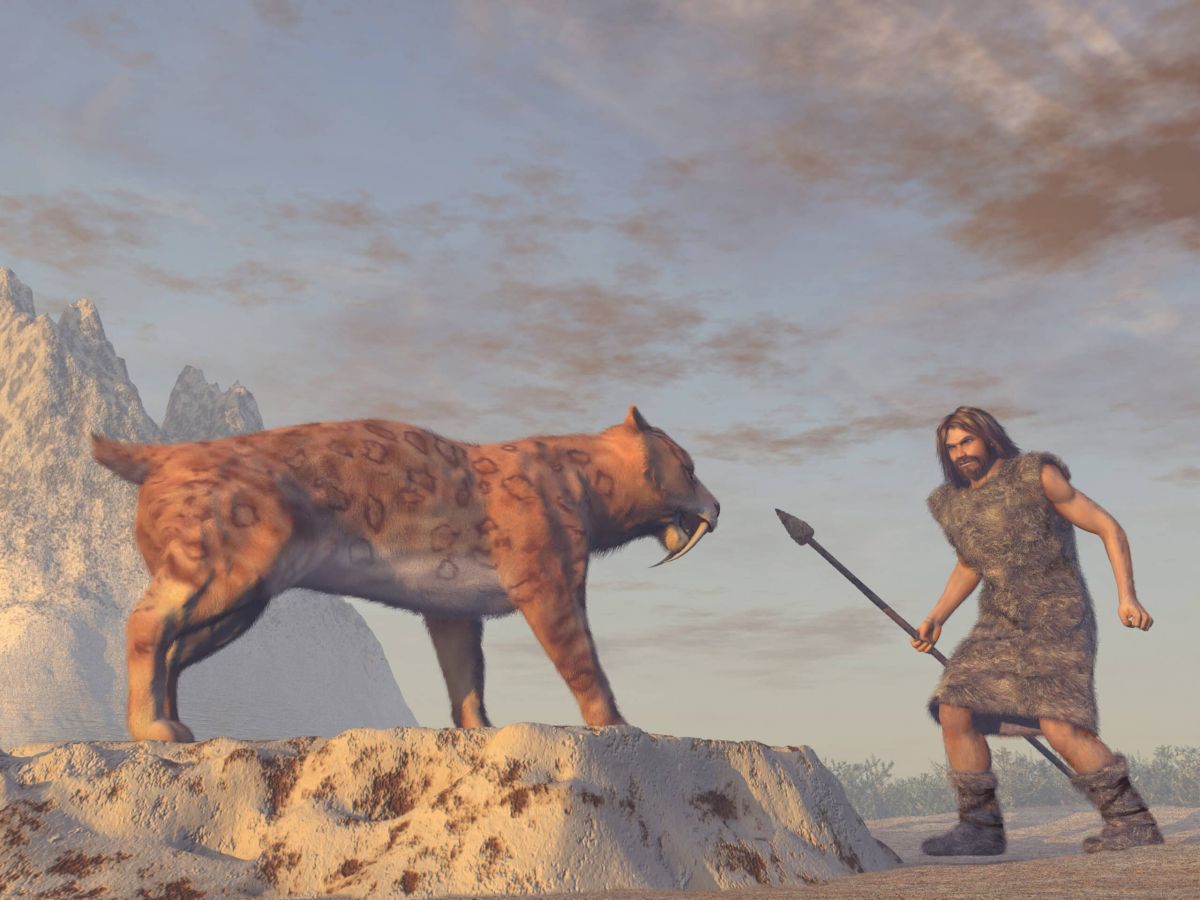Shadows of Giants: Prehistoric Humans and Big Cats

For millennia, the story of humanity has been intertwined with that of the great cats. Long before villages and agriculture, our early hominin ancestors shared a world dominated by these apex predators, a world where survival was a daily struggle played out under the watchful eyes of saber-toothed tigers, giant lions, and fearsome leopards. This prehistoric dance between humans and big cats shaped our evolution, our fears, and perhaps even our ingenuity.
The relationship, of course, was complex and multifaceted. Primarily, it was one of competition. Both humans and big cats vied for the same resources: prey animals like mammoths, bison, and deer. Scavenging from carcasses left by these formidable predators was a dangerous but sometimes necessary strategy for early humans, a risky gamble that could provide vital sustenance. Conversely, big cats might have occasionally preyed on early hominins, adding another layer of threat to an already precarious existence.
The fossil record provides tantalizing glimpses into this relationship. Fossilized bones showing tooth marks consistent with predation by big cats, alongside evidence of early hominin attempts to protect themselves with rudimentary weapons, paints a picture of constant vigilance and innovation. The iconic saber-toothed tiger, Smilodon, with its massive canines, likely posed a significant threat. Remnants of these predators, often found in the same fossil deposits as early human remains, underscore their shared existence on the prehistoric landscape.
But the story isn’t solely one of conflict. The need to avoid becoming prey undoubtedly drove the development of key human traits. Improved eyesight, enhanced communication skills, and the ability to coordinate group hunting strategies would have been crucial for survival in a world teeming with powerful predators. The constant threat from big cats may have fueled the development of larger brains and more complex social structures, turning a disadvantage into an evolutionary advantage.
Moreover, the relationship might have even encompassed reverence and respect. Cave paintings around the world depict big cats with striking accuracy and frequency, suggesting a deep awareness and perhaps even admiration for these powerful creatures. These depictions, often found in areas used for ritualistic purposes, hint at a symbolic connection between early humans and the big cats, a connection that transcended the simple predator-prey dynamic.
The legacy of this prehistoric dance continues to resonate today. The ingrained fear of large predators, particularly cats, remains deeply rooted in our psyche. Their image continues to inspire awe and wonder, appearing in art, literature, and mythology across cultures. Understanding the ancient relationship between humans and big cats provides a deeper appreciation for our own evolution and highlights the enduring power of these magnificent creatures.
As modern humans continue to encroach on natural habitats, the future of big cats is increasingly uncertain. Understanding the long and complex history we share with these animals is crucial for ensuring their survival. Perhaps by remembering the lessons learned from the shadows of our prehistoric past, we can learn to coexist with these incredible creatures, ensuring their place in the world for generations to come.



